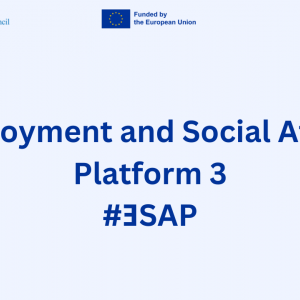Eurostat: November 2021 - Euro area unemployment at 7.2%; EU at 6.5%

EU youth unemployment rates November 2021 (Photo: Eurostat)
In November 2021, the euro area seasonally-adjusted unemployment rate was 7.2%, down from 7.3% in October
2021 and from 8.1% in November 2020. The EU unemployment rate was 6.5% in November 2021, down from
6.7% in October 2021 and from 7.4% in November 2020. These figures are published by Eurostat, the statistical
office of the European Union.
Eurostat estimates that 13.984 million men and women in the EU, of whom 11.829 million in the euro area, were
unemployed in November 2021. Compared with October 2021, the number of persons unemployed decreased by
247 000 in the EU and by 222 000 in the euro area. Compared with November 2020, unemployment decreased by
1.659 million in the EU and by 1.411 million in the euro area.
Youth unemployment
In November 2021, 2.842 million young persons (under 25) were unemployed in the EU, of whom 2.313 million
were in the euro area. In November 2021, the youth unemployment rate was 15.4% in the EU and 15.5% in the
euro area, down from 15.6% in the EU and from 15.8% in the euro area in the previous month. Compared with
October 2021, youth unemployment decreased by 34 000 in the EU and by 37 000 in the euro area. Compared
with November 2020, youth unemployment decreased by 225 000 in the EU and by 188 000 in the euro area.
Unemployment by gender
In November 2021, the unemployment rate for women was 6.8% in the EU, down from 7.0% in October 2021. The
unemployment rate for men was 6.3% in November 2021, down from 6.4% in October 2021. In the euro area, the
unemployment rate for women decreased from 7.7% in October 2021 to 7.5% in November 2021, while the
unemployment rate for men decreased from 7.0% to 6.9%.
Additional labour market indicators
These estimates are based on the globally used International Labour Organisation (ILO) standard definition of
unemployment, which counts as unemployed people without a job who have been actively seeking work in the last
four weeks and are available to start work within the next two weeks. The COVID-19 outbreak and the measures
applied to combat it have triggered a sharp increase in the number of claims for unemployment benefits across the
EU. At the same time, a significant part of those who had registered in unemployment agencies were no longer
actively looking for a job or no longer available for work, for instance, if they had to take care of their children. This
leads to discrepancies in the number of registered unemployed and those measured as unemployed according to
the ILO definition.
To capture in full the unprecedented labour market situation triggered by the COVID-19 outbreak, the data on
unemployment have been complemented by additional indicators, e.g. underemployed part-time workers, persons
seeking work but not immediately available and persons available to work but not seeking, released together with
LFS data for the second quarter of 2021. LFS data for the third quarter of 2021 will be released on 13 January
2022.
Read the original news HERE
Source: Eurostat





